As an Amazon Associate, we earn from qualifying purchases. We may also earn commissions if you purchase products from other retailers after clicking on a link from our site.
Whether you’re a monohull enthusiast curious about the advantages of multi-hull boats, or you’re set to invest in your next boat and are debating monohull versus multi-hull, there are plenty of reasons to opt for a catamaran.
Reasons why you should buy a catamaran include the quality of space you gain, speed of performance, handling and stability, and affordable cruising costs. Opt for a catamaran if you value exploring coastlines close-up, peaceful anchorages, and a life at sea with enhanced comfort.
In the following article, I list why boat buyers make the switch to catamarans, ditching monohull’s ballast and confined spaces for a spacious boat that produces exhilarating speeds. I also breakdown tips on selecting the right catamaran for you. Read on to discover everything your future catamaran holds in store for you.
The History of Catamaran: Distinct Advantages Over Monohull
Etymologically, the word catamaran derives from the Tamil word ‘kattumaram,’ which translates roughly as ‘logs bound together.’ When you think about a catamaran’s structure—its resemblance to two logs bound together—you see how a catamaran’s parallel hulls and its inherent geometry give the boat stability. The design also offers unique advantages to its crew, which we unpack later on.
By the nature of their design, a catamaran has less hull volume than a monohull craft. They also have smaller displacement and a shallower draft compared to similar length monohulls. Even with the two hulls’ surface combined, a catamaran has less hydrodynamic resistance, which means a catamaran demands less propulsive power.
Here’s a quick summary of the advantages so far:
- Greater stability
- 25-30% faster than a monohull
- Better heeling characteristics
- Better seakeeping characteristics, specifically with a heave, pitch, and roll motions.
Now let’s take a deep dive into why you should buy a catamaran.
Abundant Interior Space and Comfort
When you examine the design layout, one element becomes abundantly clear—catamarans promise more comfort and space than monohulls. A quick look at the Lagoon 450 S Sports Top, for example, presents an abundance of living areas that are pleasantly distributed throughout.
The cockpit and living space make for extremely comfortable living conditions, vital if you’re to enjoy a long voyage. The galley and saloon on a catamaran are situated on the same level as the deck and helm, making for ease of transition between the two areas.
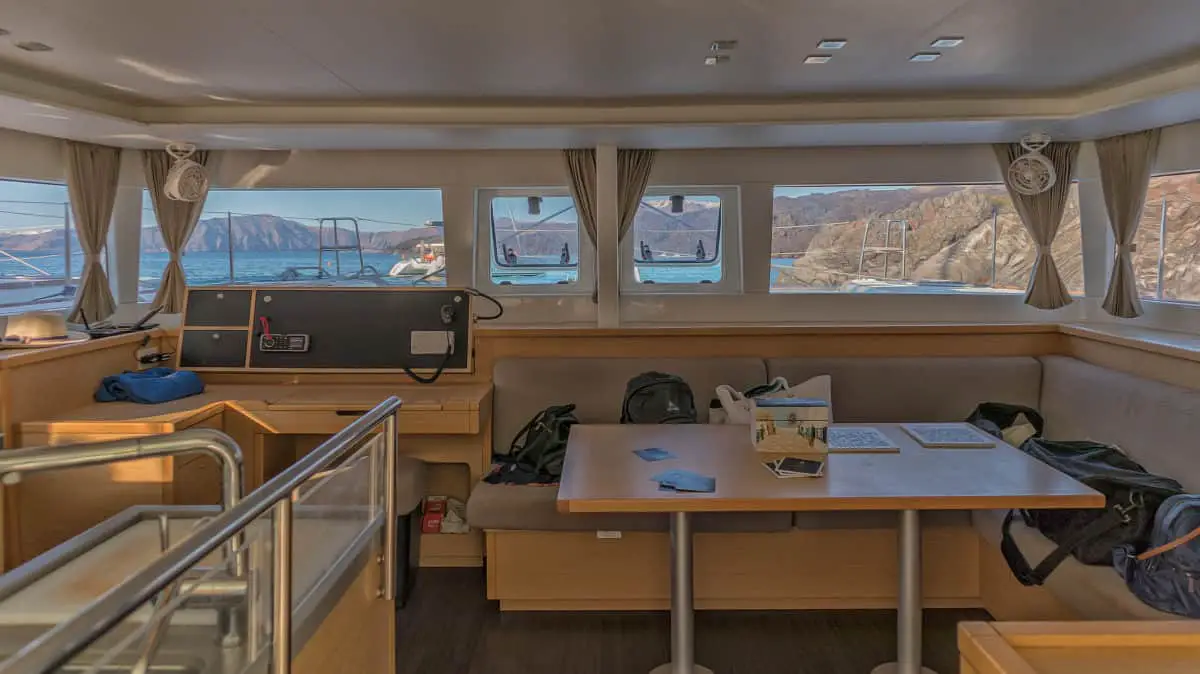
Food preparation and social occasions can take place in a shared area, no longer divided by awkward design conventions. Then there’s the matter of bedroom space evenly distributed across the boat in private areas, affording crew members separate areas to recharge and recalibrate.
Going beyond the aesthetic appeal of space and creature comforts that catamarans can accommodate, let’s return to catamarans’ proven stability. Stability refers to how a boat tends to return to its original state after a disturbance (i.e., being struck by a wave).
Anyone who’s ever rolled around below deck in a monohull and suffered seasickness will appreciate that a catamaran’s stability and reduced heeling instill more impressive below deck comfort—you’re far less likely to suffer the blows of waves or to find yourself suddenly off-balance.
The Sensation and Advantage of Speed
At 20-25% faster than a monohull of like size, while you may not be looking to out clip your sea-faring monohull colleagues when it comes to the need to outrun inclement weather, a cat, as they’re affectionately called, will ensure fast performance. Even if you’re sailing upwind at an angle greater to the wind than a monohull, which would mean covering a longer distance, you’ll still arrive at your destination ahead of your monohull bound colleagues.
In the context of bad weather, speed is paramount for dodging an incoming storm or rolling waves. Combined with an onboard weather station that will keep you abreast of weather reports, your catamaran’s speed, maneuverability, and ease of handling will put you ahead of changes as they occur at sea.
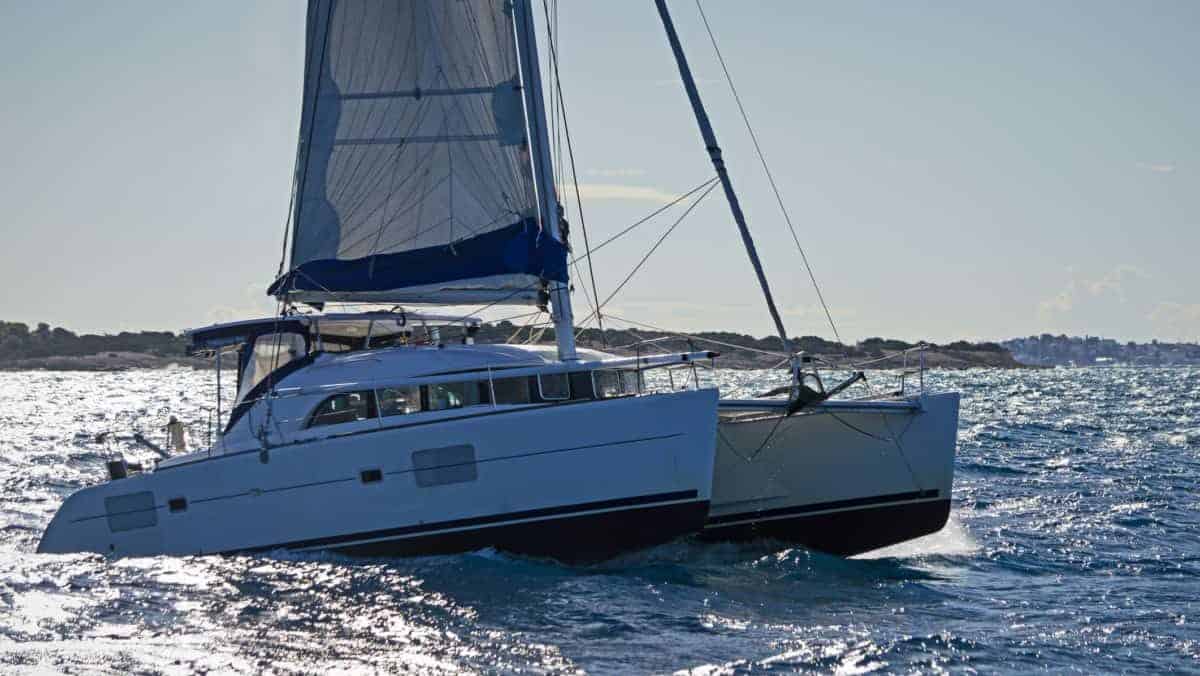
And speed is more than keeping ahead of bad weather situations; sometimes, you want to let your cat loose on the open water and feel her run. With a cat’s layout optimizing vision from the helm, combined with the feeling of an unfettered blast of the wind in your sails, a cat’s speed is an unbridled pleasure to experience from the comfort of a spacious deck that offers incredible views and sensations.
If you’re investing in a high-end boat, why not combine speed with luxury? Catamarans are known to be the ideal mix of both features. Speed is a limiting factor for monohulls, but that’s not the case with catamarans. They’re designed for optimal aerodynamics and sailing unlike anything you’ve tried.
Stability Equals Safety
Catamarans have no ballast stored within their keels, their stability derives from the beam and buoyancy. Suppose you have a 45-foot catamaran. Its beam is likely to be close to 50% of the length, making a 22-ft wide, stable platform.
The result of extra width is more desirable seakeeping and reduced healing effects. The total effect of these desirable qualities is a boat that’s safe to maneuver about, either above deck, amongst the rigging, or within the living quarters.
Let’s add to a catamaran’s advantages the comfort and confidence it lends to those within your crew susceptible to motion sickness—two elements of a catamaran combine that diminish the impact of motion at sea. Anyone predisposed to seasickness, a catamaran’s stability, and above sea-level galley and saloon will ensure that person never loses sight of the horizon nor experiences the swelling motion that brings on nausea.
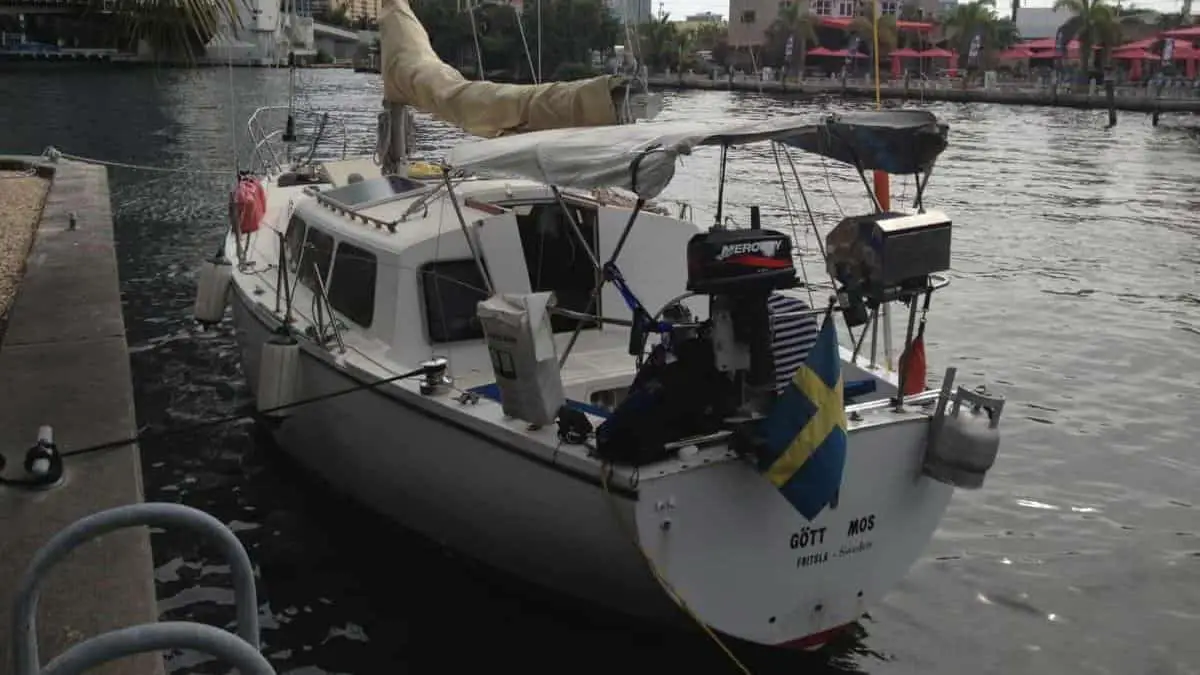
The level sailing of a catamaran also increases the likelihood of never losing a crew member overboard in adverse conditions. The possibility of a disaster is significantly reduced. Add to this the amount of ballast locked into the boat’s closed-cell foam construction; you gain substantial additional buoyancy, always a must when afloat.
Whether you’re a beginner or a lifetime sailor, safety is a top concern for most people. Boat enthusiasts will be impressed by the style and previously mentioned aero and hydrodynamics, and anyone who wants to own one of these top-of-the-line boats will enjoy the peace of mind with the catamarans very stabile design.
Shallow Draft, Blissful Anchorages
A prime reason for selecting a catamaran must also be the availability of sublime anchorage sites. Monohulls sit significantly lower in the water than a catamaran. Suppose your 40-50ft catamaran has a draft ranging between 3-ft to 4.5-ft; in that case, shallow waters become a haven to drop anchor, so you can expect to anchor your cat close to a beach.
Having a shallow draft on your cat means you can get closer to exploring with minimized chances for running aground. While anchored, you once more benefit from your cat’s inherent stability. Forget about endless bucking rodeo pitching and rolling, as catamaran’s have significantly reduced pitching, making for a more comfortable anchorage despite off-shore rollers.
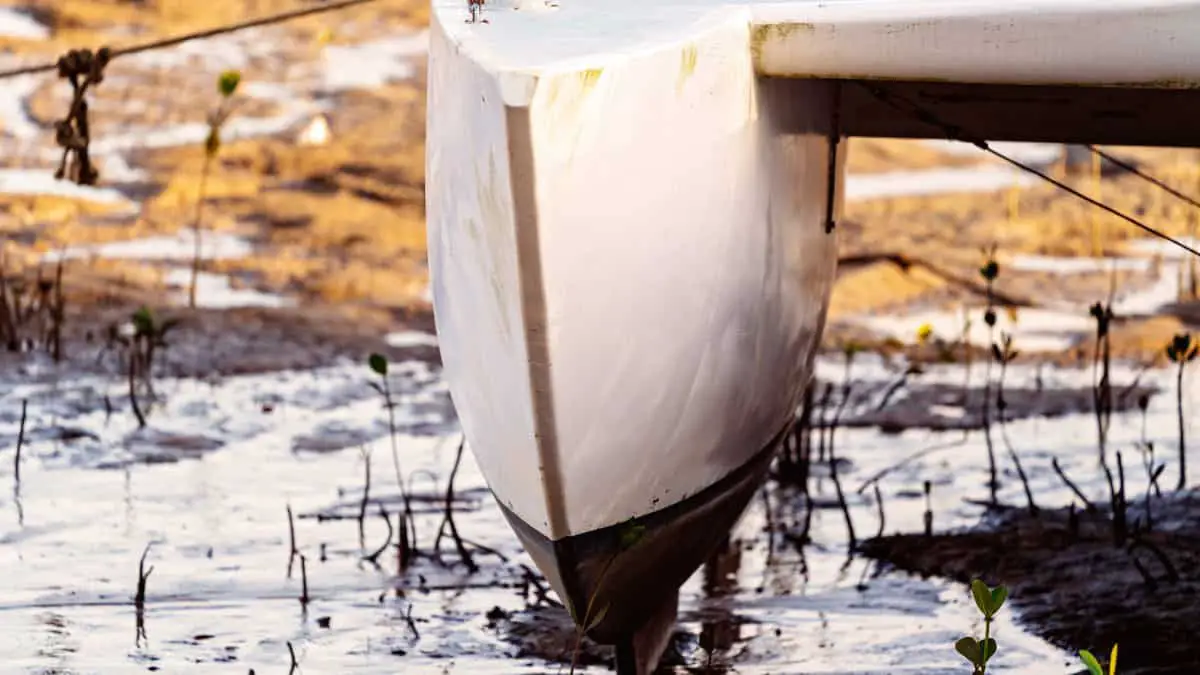
The shallow resting position is created by the widely separated hulls, low weight, and high buoyancy. Catamarans can go much closer to docks and shallow water than most boats. They won’t scrape the bottom or cause anchoring issues. Instead, you can get close to sea caves, coral reefs, and other natural features without damaging your boat or nature.
However, shallow cruising isn’t the only advantage of the catamaran’s unique design. The low-profile construction makes these boats much easier to anchor than most others. For more information, proceed to the next section.
Why you should use a catamaran bridle when anchoring!
Low Profile: An Awesome Anchorage Experience
Assisting a cat’s stability is the bridle set-up option for dropping anchor and attaching that anchor to your cat. A bridle (system of ropes) is attached to both bows and the anchor chain, which has an even distribution of force pulling both bows. It’s a case of two stabilizing forces across the boat’s geometry is better than one stabilizing force.
So once more, you’re looking at a boat that’s going to give you a significantly more pleasant anchorage experience than a monohull would provide.
Last, the cat’s shallow draft means you can access your boat’s hull for shallow-water repairs. It’s unlikely you’ll need to do such a repair, but it’s good to know that once the tide’s out, your boat will rest upon her keels as you go about performing any have-to jobs on the exterior hulls.
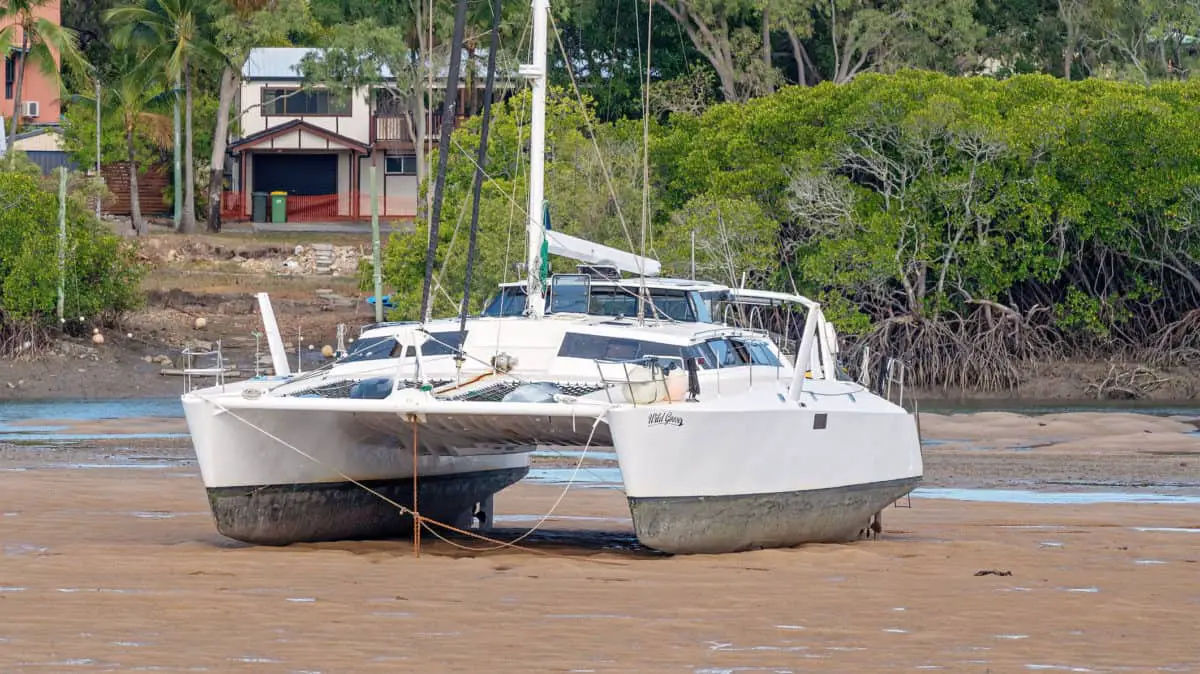
Learn how to beach your catamaran
Maneuver and Explore
Along with the two hulls, your catamaran comes equipped with two engines. First, an extra engine lends your experience peace of mind. Should one engine fail, you’ve another in reserve. But we’re talking about the power and maneuverability you get with a catamaran, which comes from two engines placed within each hull.
With two engines set on either side of your catamaran, you gain agility and precision steering. Once you add bow-thrusters to the equation, you’ll be chartering unchartered waters and exploring to your heart’s content. In case you moor your catamaran at a marina, precision steering comes into its own, adding a keen advantage to even an unseasoned helmsman.
With precision steering coupled with shallow draft and the extra space you have on deck, you’ll be able to squeeze your cat into the most private and secluded of bays.
Sail through shallow water with complete control. There’s no scraping, crashing, or excess rocking. It’s as easy as it gets with a luxury boat.
Why do Catamarans have engines?
Powered by Your Environment
For some seafarers, the romance of traveling by the power of wind and sail alone is a draw that’s especially resonant for eco-conscious souls. But what if you need to rely upon those motors to drive your cat when the wind leaves you wanting?
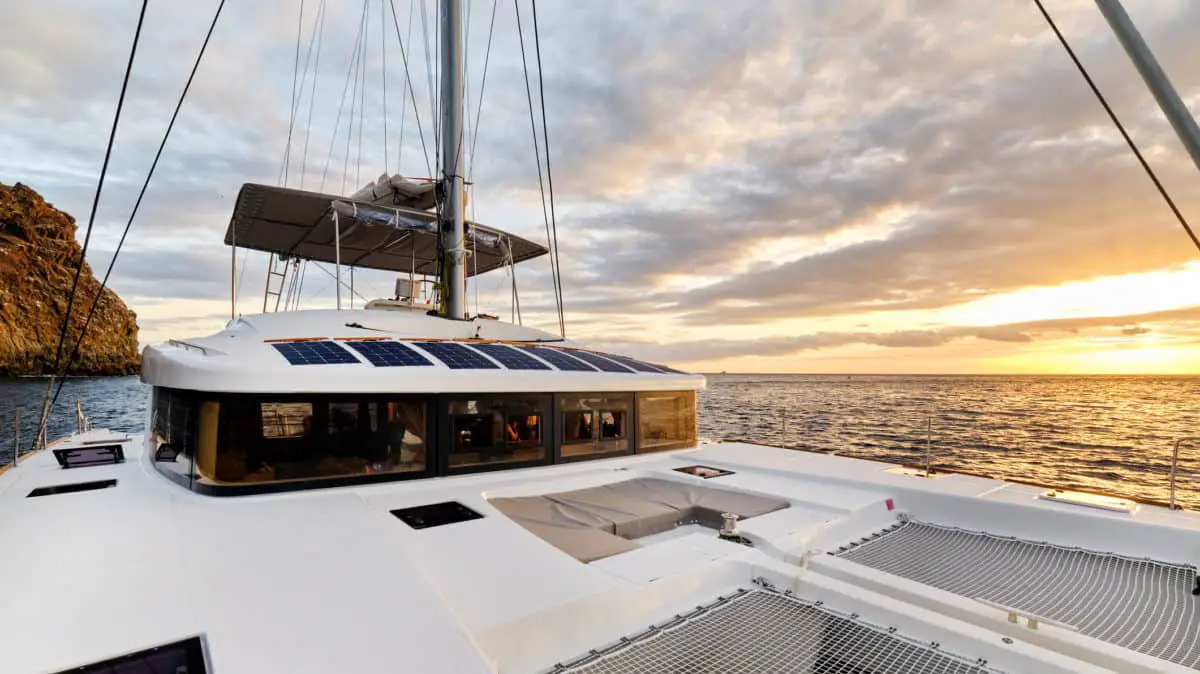
Catamarans, by the nature of their design, have exponentially larger flat surface areas than any monohull. This large surface area is a perfect catchment area for sun rays, which solar panels can capture and convert to electricity.
Take the likes of catamaran like the spectacular Silent 80 or the Sunreef Power Eco. Admittedly, catamaran of this caliber is currently very pricey, so they remain affordable only by the elite few. However, these crafts allude to the future of catamarans. If this is the case, expect endless cruising opportunities devoid of reliance upon fossil fuels, thereby putting man and boat once more in sync with nature.
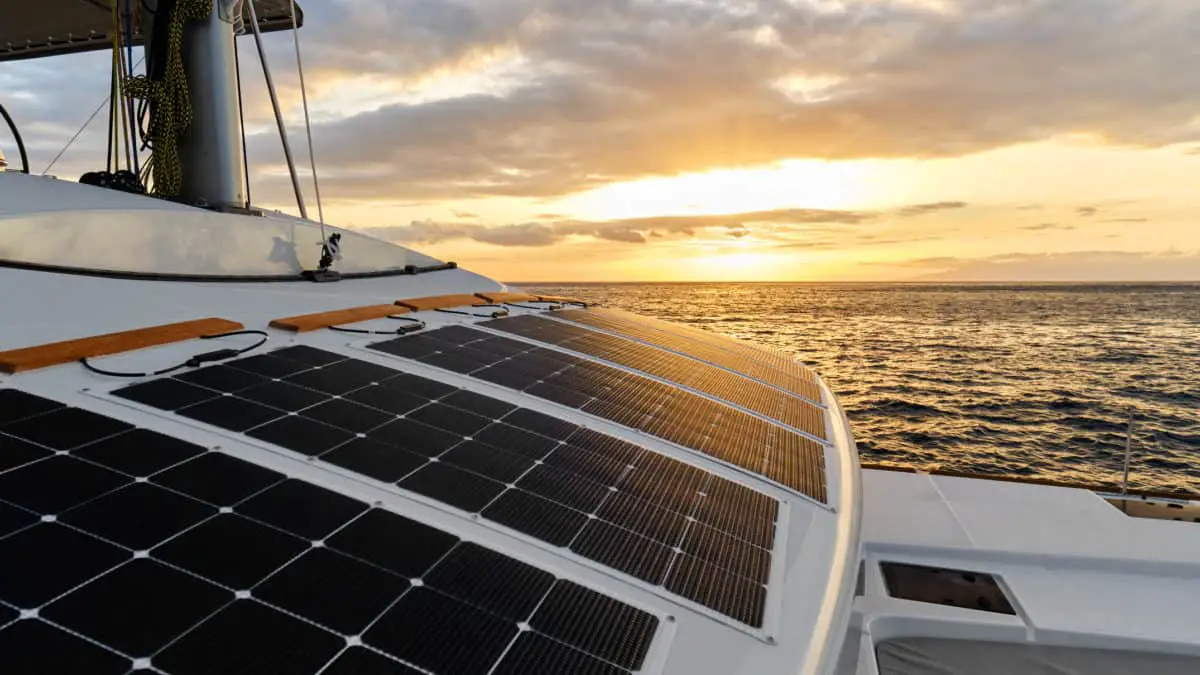
If you don’t want to spend a little extra on these high-end models, you can install solar panels on any catamaran. Hire a professional to wire a few 100W panels from the deck to the engines. You might not get the same amount of power as you would with the Silent 80 or Sunreef Power Eco, but you’ll cut back on the boat’s power consumption.
Check out the solar panels that we used on our boat in the bahamas!
Cost Efficiency
Returning once more to the advantages of two slim hulls with less hydrostatic resistance than one large monohull, catamaran’s double hull means more than greater speed; it makes greater efficiency. These boats, with their shallow draft, demand less from their engines and sails. The consequence of a catamaran owner? A substantial saving in operational costs accrued over distances.
The measurable improvement in catamarans’ efficiency compared to monohull counterparts gives catamaran the edge over seafarers who prioritize sustainability alongside performance. Additionally, these beautiful crafts, thanks to their superior ease of management, require fewer crew members. Combine this with greater fuel efficiency, and you find yourself gazing upon a boat that has lower running costs and the cache of being greener.
If you add the aforementioned solar panels, you’ll increase the cost efficiency even more. You’ll use much less diesel, especially on sunny, windy days.
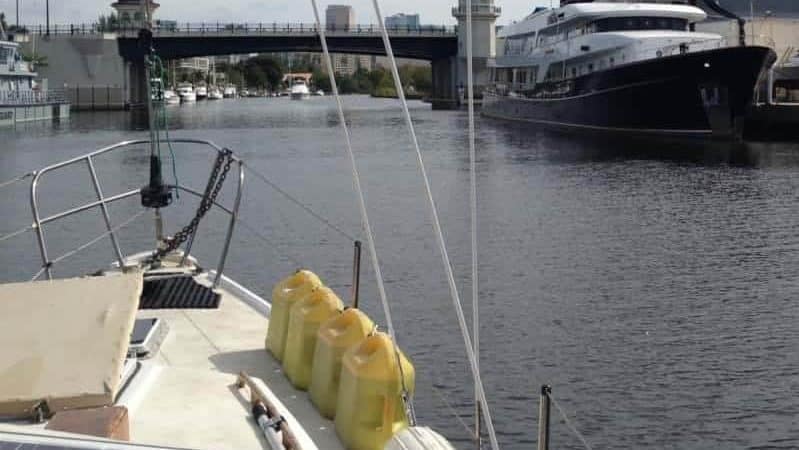
Save fuel and money with these tips!
According to The Multihull Company, catamarans hold their value much better than most boats. They typically don’t depreciate beyond 60% of their original value, regardless of their age (assuming they’re kept in good condition).
It’s no secret that catamarans are luxury boats, but that doesn’t mean you have to lose the investment right away. Keep it updated and upgraded, then sell it for a hefty price when you’re ready to get another (or maintain it for many decades to come).
Board With Ease
When was the last time you boarded a monohull? Depending on the design of a monohull, boarding these vessels can be a challenging task. Then you have to maneuver about your boat, from deck to saloon, from prow to stern. Monohulls have high-sides and obstacles. In contrast, catamarans are easy to access, either from a dinghy or coming out of the water.
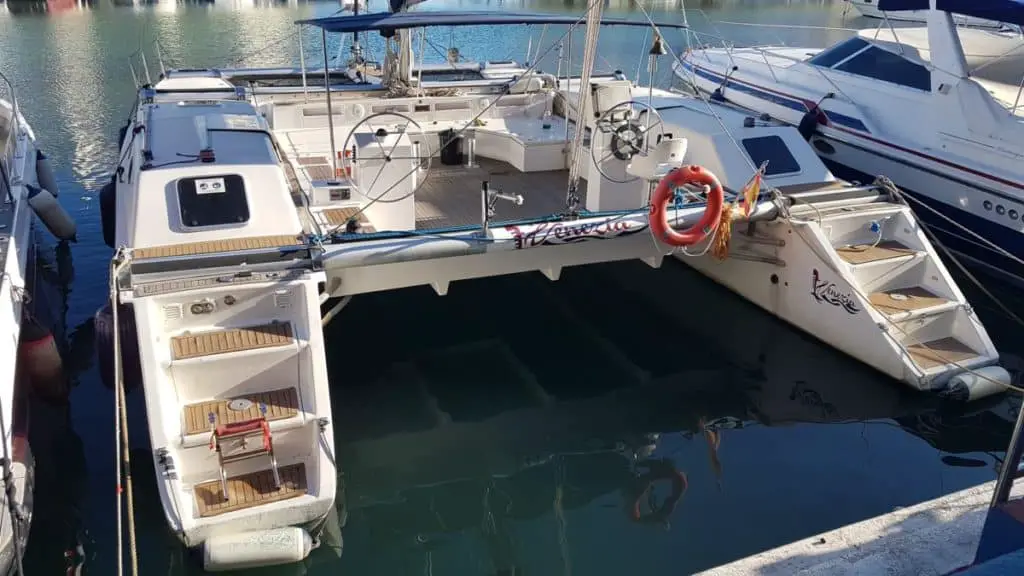
When you’re investing in such a high-end boat, ease of access and comfort should be at the front of your concerns. Fortunately, catamarans provide everything you need to board them easily. Water access provides a new layer of excitement. You can dive into the water, swim around, fish, and enjoy the scenery.
With this summary of a catamaran’s advantages spelled out, let’s take a look at how to choose the best catamaran for your sailing style and which cats would be optimum.
What to Look for When Buying the Best Catamaran
Choosing the optimum catamaran for your sailing preferences is paramount. Supposing you’re tempted to invest in or charter a catamaran, we’ve set out some tips to help you select the right catamaran for you. In the end, you’ll find information and resources for marine surveyors since you should never invest in a second-hand boat without a survey.
Establish Your Sailing Preferences
Are you a weekend cruiser or a long-distance, all-year-round sailor? Do you prefer performance or value space and comfort? Luxury boats like Lagoon make for a luxurious life at sea, but they’re slower, which could be a drawback to your long-distance dreams.
Take the time to define what you want from your boat and be honest with how you intend to use it. List the factors that are important to you and set those against your sailing habits. Once you appreciate your needs, you’ll be able to work out the criteria your cat must deliver.
Which Hull Type: Daggerboard or Fixed Keel?
Catamarans have two hull types to choose from, which is another factor you must consider since it will affect how your boat handles. But which should you choose for your catamaran, daggerboard or a fixed keel?
Advantages and Drawbacks of a Catamaran With Fixed Keels
| Pros | Cons |
| Majority of catamaran are fixed keel | Loss of height when sailing upwind |
| Gain more usable space within the hull | Slower performance compared to daggerboards |
| Fewer moving parts & less costly to repair | |
| Beach your boat more easily |
Advantages and Drawbacks of a Catamaran With Daggerboards
| Pros | Cons |
| Sails higher into the wind for added speed and pointing, representing a powerful safety feature | More costly to build |
| Improved performance for speed, approximately 2 knots faster than fixed keel | Running aground without drawing up daggers can lead to very costly repairs |
| Draw up the daggers to get closer to shore than a fixed keel | More moving parts, so if poorly constructed daggerboards will rattle |
| Daggerboards give a skipper more control in rough weather | Reduced interior hull space |
Payload
Catamarans are sensitive to the weight or payload they carry. Therefore, how much gear do you plan to take onto your cat? What’s its payload? A regular production cat will be more forgiving than a fast cruising multihull. Add this information to your criteria when shopping for your cat: do you value speed and performance more or less than what you plan to carry with you?
Bridgedeck Clearance
The space between the hulls up to the underside of the cat’s cross-section, or saloon, is called the bridgedeck. This is the part of your cat that will slap the waves and create noise. Catamarans that have higher bridge decks make for a quieter cruise as you gain less sound from waves slapping the underside of your bridgedeck. The benefit of a higher bridgedeck is also a smoother sailing experience with reduced jarring from each wave strike.
Research Catamaran Brokers and Users
We value word of mouth recommendations and genuine user experience to compile facts and opinions, so we encourage you to talk with boat brokerages and boat users across a broad area to glean first-hand information on boats. Share your criteria for a catamaran and a broker worth their sales percentage should freely offer their expertise to steer you towards a boat that’s an excellent fit. And be sure to inspect as many boats as you can that fall within your budget.
Charter a Trial in All Weather Conditions
It’s the old ‘try before you buy’ trick that’s tried and tested. Whether you are opting for a brand new luxury catamaran or purchasing a second-hand catamaran, don’t be hasty. If you can, charter the vessel so that you can put it through its paces, realize its perks and pitfalls—before you part with your money.
In case you plan on buying a second-hand catamaran, talk with the vendor, and arrange to trial the boat in various conditions to see how it handles. Where you can, look through maintenance records to discover any past faults or times that it’s been docked. The better sense you have of a boat’s history and handling, the better chance you have of selecting your ideal catamaran.
Should You Have a Marine Surveyor Assess Your Boat Pre-Purchase?
Investing in a complete marine survey prior to purchase is the best thing you do—and it will save you from expensive nightmares further down the line. In the same way, you’d not buy a house without a surveyor’s report, pay a boat surveyor to assess your boat to ensure you purchase a boat that’s in top condition.
A boat surveyor will measure aspects such as hull condition; consider the AC and DC circuits, outboard motors, onboard safety features, and other elements of your boat you’d not even consider. They’ll notice elements an untrained eye would miss; and, their assessment can give you leverage when it comes to bargaining on price also.
For a comprehensive list of accredited marine surveyors, check out the following organizations:
The website of each organization contains information on marine surveys. Most significantly, marine insurance underwriters accept value surveys or pre-purchase surveys from surveyors registered to either organization.
Final Thoughts
Catamarans are in a league of their own in terms of the advantages they offer to sailors, and depending upon your preferences for sailing, there’s a rig that’ll suit you. Whether you plan to buy a luxury liveaboard catamaran or a catamaran for short weekend trips, we’re convinced that catamarans are the boat of the future.
Check out the best Catamarans under 200k
